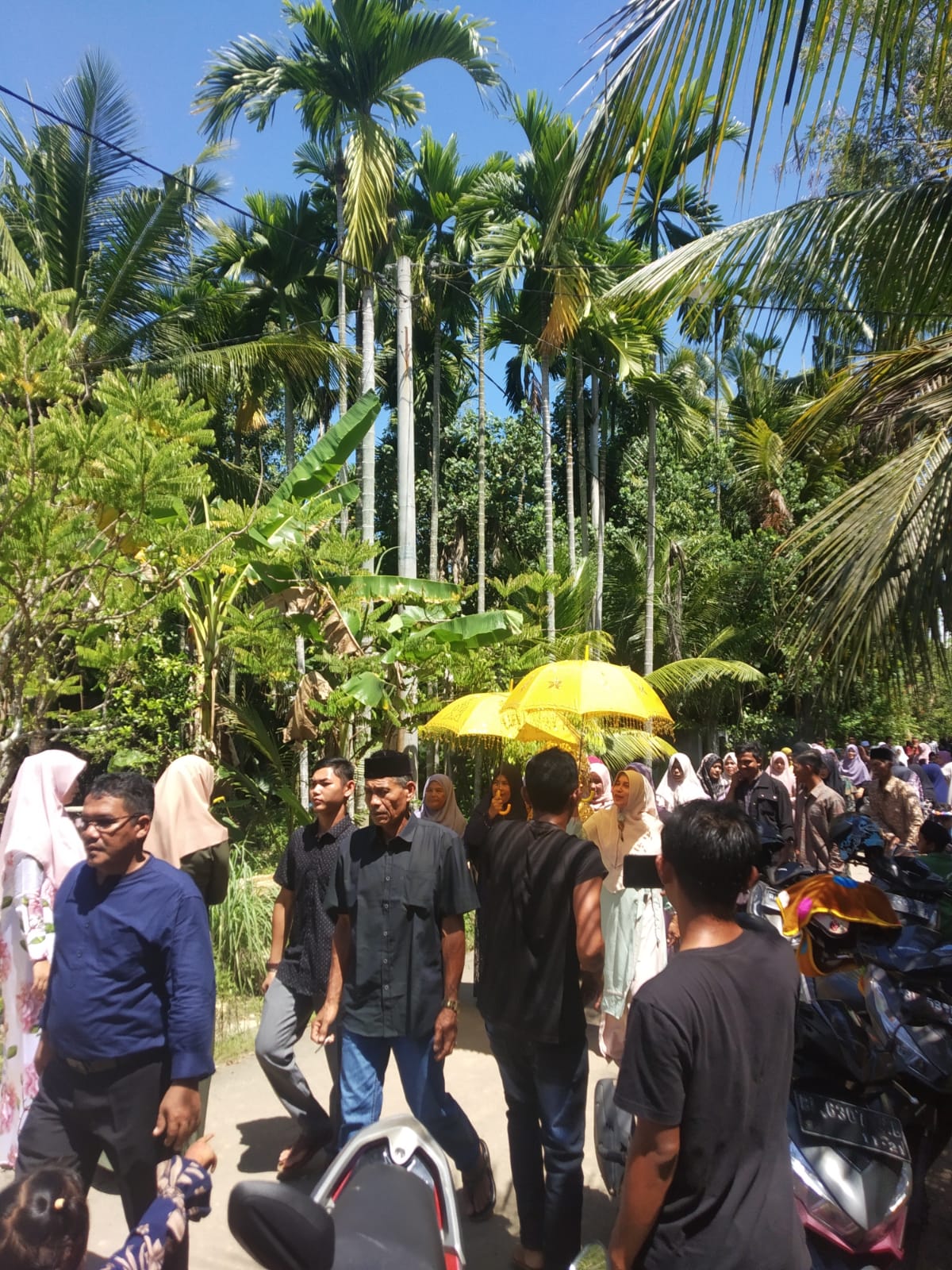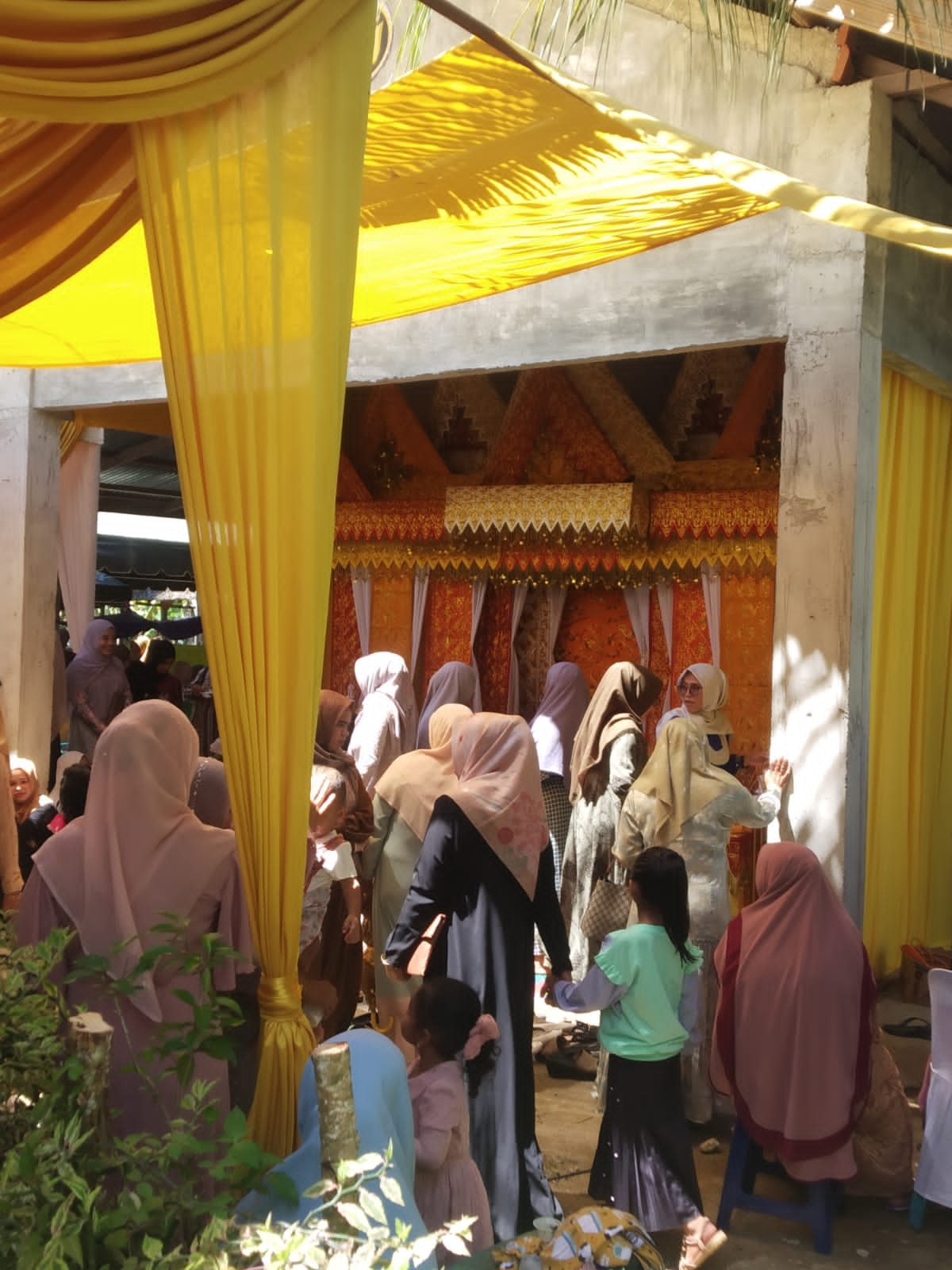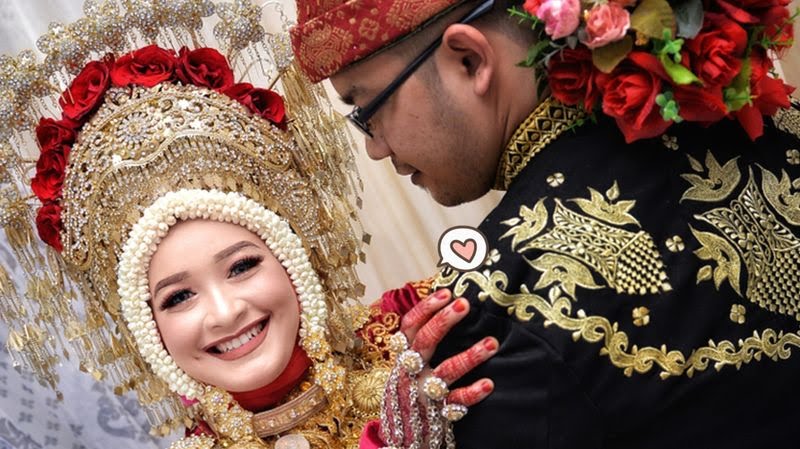Aceh Traditional Wedding Procession
Aceh is one of the regions in Indonesia that is rich in a mixture of cultures and traditions. Likewise in the traditional Aceh wedding process.
It is covered with a mixture of Arab, European, Chinese and Indian cultures.
In Acehnese traditional marriage, it is filled with terms and elements of kinship and respect for God and fellow human beings.
Aceh Traditional Wedding Procession
Acehnese culture continues to develop in sacred rituals and traditions, one of which is marriage customs.
Starting from the wedding procession, clothing, religious nights, everything is assembled into a wedding full of meaning.


The stages and processions of traditional Acehnese weddings include:
1. Jak Keumalen (Cah Roet)
The first Acehnese traditional wedding procession was Jak Keumalen. This is a path-breaking procession carried out to find out and get to know the prospective bride.
This procession will usually be carried out directly by the parents or a special envoy from the male side.
The family of the prospective groom (linto baro) came to stay in touch while observing the prospective bride (dara baro).
Usually, the groom will bring bungong jaroe (a gift of food). The women will welcome the male family, and continue with jak meu lake (jak ba ranub) or ask for a hand.
Jak keumalen itself can be done in two ways:
Directly done by parents or family
Using a special messenger (theulangke)
2. Jak Meu Lake Jok Theulangke (Jak ba Ranub)
After that, the Acehnese traditional wedding procession continued with Jak Ba Runub. This is like the 'application' procession.
In this procession, the parents of the prospective groom will authorize theulangke (special envoy) to present the purpose of the arrival to the prospective bride, by bringing gifts such as betel, fruit, clothes and so on.
The two families will consult each other.
If the prospective bride accepts the proposal, then she will answer "Insha Allah" while if it is not accepted they will answer with a good reason such as "Hana get lumpo".
It means a dream that is neither good nor bad. Acehnese culture is thick with the meaning of dreams and the power of nature.
This belief is influenced by ancestors even in terms of choosing a bride and groom.
If the application is accepted, the man's family will continue with a jak ba sign (bringing a finished sign).
3. Peugaca/Inai night
Towards the wedding day, the bride and groom will hold a celebratory ceremony at night within 3 to 7 days. This is called Peugaca night.
The purpose of this Aceh wedding procession is to raise prayers and advice from parents with the help of traditional elders.
This is intended so that the bride and groom get blessings and convenience in married life.
In this ceremonial procession, a peusiejeuk (ceremony for giving fresh flour) the prospective virgin baro and peusiejeuk gaca also held, as well as bate mupeh (millstone).
The purpose of peusiejeuk is to give and receive blessings and hope for salvation for all events that will happen to God Almighty.
The clothes and clothes worn by the virgin baro on this Henna night are not tied and continue to change from the first to the seventh night.
4. Marriage/Ijab Kabul
Enter the next Acehnese traditional wedding procession, namely the wedding night. This custom is strongly influenced by Indian and Arabian crocodiles.
In the past, Ijab and Kabul could be done at the KUA or at a prayer room near the house without the bride present.
However, now it is growing with the acceptance of consent which is carried out in a large mosque.
Ijab and acceptance of the groom to the woman were attended by the marriage guardian, the head of the village, witnesses and the family.
Usually the pronunciation is in the aceh language "ulon master of the wedding, aneuk lon (if the father of the woman pronounces it)....(name of the bride) ngon gata (name of the groom) ngon meuh...(amount of dowry that has been agreed upon) mayam , "
The answer is "Ulon Tuan Terimong nikah ngon kawen.. (name of bride) ngon meuh.. (amount of dowry that has been agreed upon) mayam, cash"
There are several different pronunciations, adapted to local agreements and customs.
5. Straighten Teeth
Well, if you follow the traditional Acehnese wedding procession in the past, the night will flatten your teeth.
The teeth of a married girl must be cut with a tooth file, then given a tooth-strengthening drug (steel ruek).
This is done before the wedding and is determined by the family.
Cutting teeth begins with the position of the bride and groom lying on the mattress, filing the teeth on the odd side and then on to the other side.
When finished, he will rinse his mouth with warm salt water, then with a patchwork that has been soaked in hot water, clench the upper and lower teeth, each gap is smeared with ruek steel until evenly distributed and left for a while.
Then clean the teeth with tapeh (coconut fiber) and rinse with clean water.
This traditional Acehnese wedding procession aims to strengthen teeth and give a more beautiful impression.
However, this procession is rarely done nowadays.
6. Khatam Al-Quran
Because the Acehnese traditional wedding procession is still thick with Arab culture, it is necessary to khatam the Koran.
This ceremony is led by the teacher of the Koran and begins with reading a prayer to get happiness in this world and the hereafter.
After that the bride and groom are fed sticky rice and tumpo, and finish reading the last verse of the Qur'an.
When finished, the bride and groom will shake hands, give thanks and ask for forgiveness and the blessing of the Koran teacher
Next, the teacher guides the prospective dara baro to do the same thing to his parents and closest family.
The khatam Al-Quran event was closed by giving gifts such as eggs, laying eggs, rice, rice and alms money to the Koran teacher.
7. Wedding Party
Followed by a wedding party which is carried out after holding the marriage agreement between the groom and the bride.
Usually held on the same day or another day. This is also known as the Tueng Linto Baro event.
The wedding party in the Acehnese traditional wedding process aims to not only celebrate happiness but also to introduce the bride and groom to all relatives.
Procession After the Wedding
After the wedding ceremony, the Acehnese traditional wedding process was not over, Moms. There is such a thing as Tueng Dara Baro. What's that?
8. Tueng Dara Baro
In addition to the wedding party, there are those who do Tueng Dara Baro as a traditional Acehnese wedding procession.
This is a ceremony to invite the bride and her entourage to the male family's house.
This ceremony is carried out seven days after the marriage contract. The women's family will bring gifts in the form of food, cakes, and other foods.
In this process, both parents will exchange betel nut, at the entrance it will also be sprinkled with rice, potpourri and leaves as a seunijuk.
After the bride sits down, the mother of the groom will do plain flour and continue to prostrate and bless the parents.

that's the traditional Acehnese custom at the time of getting married...
*thank you so much**
Source of potential plagiarism
Direct translation without giving credit to the original author is Plagiarism. Repeated plagiarism is considered fraud. Fraud is discouraged by the community and may result in the account being Blacklisted.
Guide: Why and How People Abuse and Plagiarise
Please note that direct translations including attribution or source with no original content are considered spam.
If you believe this comment is in error, please contact us in #appeals in Discord.